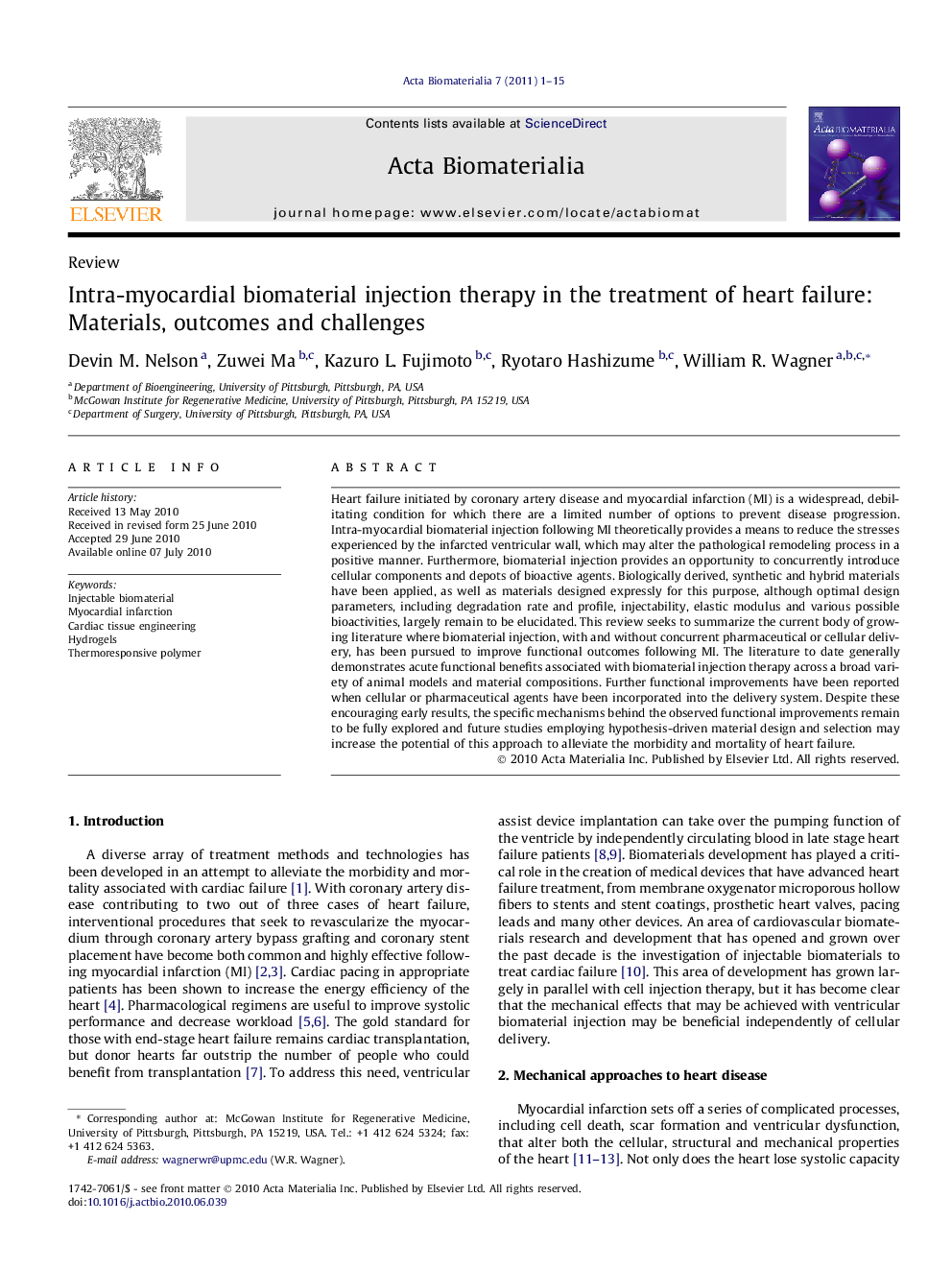| Article ID | Journal | Published Year | Pages | File Type |
|---|---|---|---|---|
| 1786 | Acta Biomaterialia | 2011 | 15 Pages |
Heart failure initiated by coronary artery disease and myocardial infarction (MI) is a widespread, debilitating condition for which there are a limited number of options to prevent disease progression. Intra-myocardial biomaterial injection following MI theoretically provides a means to reduce the stresses experienced by the infarcted ventricular wall, which may alter the pathological remodeling process in a positive manner. Furthermore, biomaterial injection provides an opportunity to concurrently introduce cellular components and depots of bioactive agents. Biologically derived, synthetic and hybrid materials have been applied, as well as materials designed expressly for this purpose, although optimal design parameters, including degradation rate and profile, injectability, elastic modulus and various possible bioactivities, largely remain to be elucidated. This review seeks to summarize the current body of growing literature where biomaterial injection, with and without concurrent pharmaceutical or cellular delivery, has been pursued to improve functional outcomes following MI. The literature to date generally demonstrates acute functional benefits associated with biomaterial injection therapy across a broad variety of animal models and material compositions. Further functional improvements have been reported when cellular or pharmaceutical agents have been incorporated into the delivery system. Despite these encouraging early results, the specific mechanisms behind the observed functional improvements remain to be fully explored and future studies employing hypothesis-driven material design and selection may increase the potential of this approach to alleviate the morbidity and mortality of heart failure.
